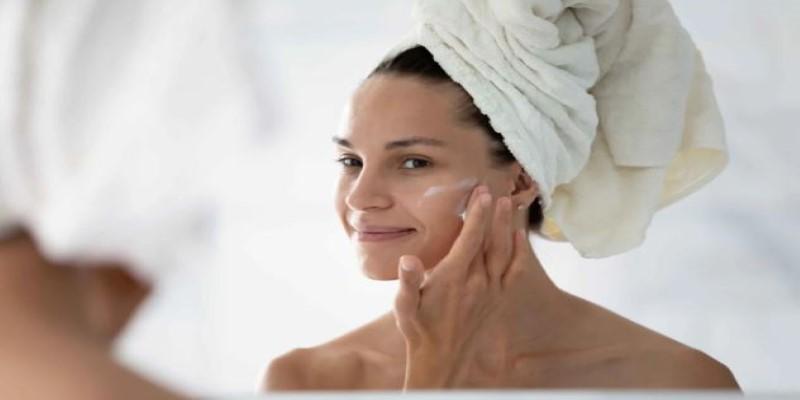Skincare routines can feel overwhelming, especially when faced with an endless array of products promising glowing, youthful skin. Many people struggle to know when to use what, and often end up applying too much at once or switching products too quickly to see real results. That’s where skin cycling has captured attention.
It isn’t about buying a new set of products but about organizing how you use what you already have. By rotating treatment nights with recovery nights, the method offers a practical rhythm that can help maintain consistency, reduce irritation, and still deliver visible improvements over time.
The basic structure of skin cycling usually follows a four-night pattern. On the first night, exfoliation takes center stage. A gentle chemical exfoliant, like glycolic or lactic acid, helps lift away dead cells from the skin’s surface. This step clears the way for active ingredients to penetrate more effectively later in the cycle. Physical scrubs are generally avoided, since they can be too harsh when paired with the rest of the rotation.
Night two is reserved for retinoids. Products such as retinol or prescription-strength tretinoin are applied to stimulate skin renewal. Retinoids are known for improving fine lines, softening wrinkles, and reducing breakouts, but they can also cause dryness or peeling if overused. Dedicating one night to retinoids in a cycle makes their benefits accessible while easing potential irritation.
The third and fourth nights are focused on recovery. During this phase, the emphasis is on hydration, barrier repair, and soothing. Moisturizers with ceramides, hyaluronic acid, and peptides are common choices. The purpose is to give skin time to restore itself after active treatments. Some people even extend recovery to three nights if they notice signs of sensitivity. After that, the four-night cycle repeats, creating a rhythm that is easy to maintain.
One of the biggest appeals of skin cycling is its simplicity. For people overwhelmed by complex routines, it creates a clear framework that feels manageable. Knowing which night is reserved for exfoliation, which is for retinoids, and which is for recovery helps reduce guesswork. Many find this makes them more consistent, which in turn leads to better results.

Exfoliation at night often brings an immediate sense of smoother texture, as dullness is lifted from the surface. Retinoid night, although slower to show effects, offers long-term benefits that can become visible over weeks and months, including a more even tone, fewer breakouts, and a reduced appearance of fine lines. The recovery nights round out the cycle, allowing the skin to feel nourished instead of stripped.
Dermatologists who support this method point out that overuse of strong actives can damage the skin barrier. Irritation, redness, and breakouts from over-exfoliation are common complaints among skincare enthusiasts. By cycling products, people are less likely to overexert their skin. The built-in recovery days act as a buffer, lowering the risk of overdoing it.
Another advantage is flexibility. The framework can be customized based on personal needs. Someone who tolerates retinoids well may shorten the recovery phase, while those with sensitive skin may stretch it longer. Because the cycle is adaptable, it suits a range of skin types and goals, making it one of the more approachable trends in skincare.
While skin cycling can be helpful for many, some groups may notice the most benefit. Beginners who are just introducing retinoids to their routines often find this approach less intimidating. Using retinoids every other night or daily may cause irritation, but cycling builds tolerance at a slower pace.
Those with sensitive skin may appreciate the structure, since it incorporates deliberate breaks for hydration and repair. People with dry skin, who often struggle with flaking or tightness from actives, may also find the recovery nights particularly useful. Meanwhile, individuals with acne-prone skin can benefit from the regular use of exfoliation and retinoids, both of which target clogged pores and inflammation.
That said, some may not need to follow this method. People with very resilient skin who already tolerate daily activities may find the schedule too limiting. Others using prescription regimens from dermatologists might already be on tailored routines that don't align with cycling. Skin cycling is intended as a guide, not a strict rulebook, so it may not replace professional care in complex cases, such as rosacea, eczema, or chronic acne.
Before adopting skin cycling, it’s worth reflecting on your current products and skin condition. The cycle is only as effective as the products within it. Using an overly harsh exfoliant or a very high-strength retinoid could still cause discomfort, even if spaced out. Opting for gentle, balanced formulas is usually safer, particularly for those with sensitive skin.
Patience is another factor. Skin cycling is not an instant fix but rather a gradual approach. Visible changes, such as improved smoothness or clarity, typically require several weeks of steady practice. If consistency is difficult, the structured routine can help, but expectations should remain realistic.

Seasonal changes may also affect how the cycle feels. In colder months, when skin tends to be drier, extending recovery nights might be helpful. In warmer seasons, some may tolerate a shorter cycle with fewer rest days. Listening to your skin is key, since the best routine adapts as conditions change.
Lastly, while skin cycling can be beneficial, it doesn’t replace professional guidance. If you have ongoing skin concerns or are using prescription treatments, check with a dermatologist before making changes. The cycle provides structure, but skincare is highly personal, and adjustments should reflect individual needs.
Skin cycling is less about buying new products and more about using them wisely. By alternating between exfoliation, retinoid treatment, and recovery, it creates a rhythm that balances results with tolerance. For people new to actives or those prone to sensitivity, the structure can be a relief, offering consistency without overwhelming the skin. Others may find it unnecessary if their skin already tolerates frequent use of strong ingredients. What makes skin cycling appealing is its simplicity and flexibility—it can be molded to fit different lifestyles and skin needs. Like any skincare approach, its success depends on consistency and awareness of how your skin responds over time.
 TOP
TOP
If you still believe that women don’t get heart diseases or that only older people can have heart diseases, you are wrong
 TOP
TOP
How building wealth is possible at any age with practical strategies that focus on consistent habits, smart choices, and long-term thinking
 TOP
TOP
Start making the most of your 401(k) today and secure a stronger financial future. Learn how timing, employer matches, and smart contributions can improve your retirement
 TOP
TOP
How financial aid for college works—from grants and scholarships to loans and work-study programs. Get clear, practical guidance for every funding option
 TOP
TOP
Discover 5 unique horse races that take place around the world, blending speed, thrill, and stunning cultural locations.
 TOP
TOP
Discover how Easter is celebrated across countries, from egg rolling to water fights, offering joy through local traditions.
 TOP
TOP
Explore North Wales’ most breathtaking gardens, from serene floral paths to hillside greenery with sea views.
 TOP
TOP
Wondering if it’s the right time for a loan? Learn how rates, timing, and your finances impact the decision.
 TOP
TOP
Discover the top reasons to pay credit card bills on time and how it safeguards your credit, money, and peace of mind.
 TOP
TOP
Uncover the best experiences in Rome, Italy, with this essential guide. Walk through ancient ruins, explore piazzas, visit historic churches, and get to know the Eternal City at your own pace
 TOP
TOP
Discover the best places to stay in Nashville, from lively downtown hotels to charming neighborhood rentals. Explore top areas suited for music lovers, families, and anyone seeking the perfect Nashville experience
 TOP
TOP
Thinking about a lease buyout? Learn how to evaluate your options, compare costs, and decide whether keeping your vehicle is the right move. Understand the financial side before making your next step